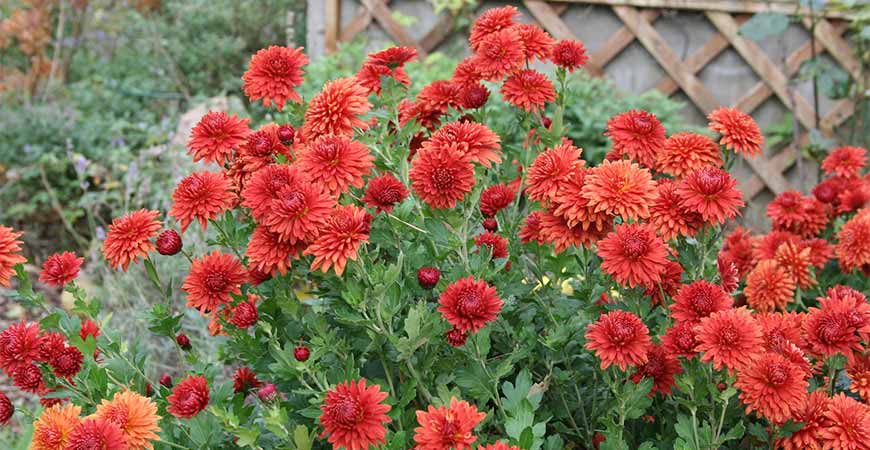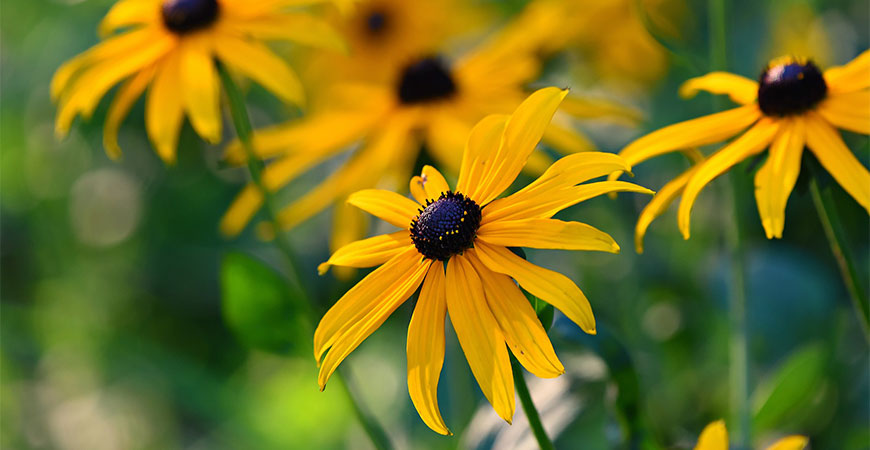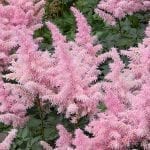
Fall Blooming Flowers for a Beautiful Autumn Garden
Did your flower garden will fade in the middle of summer? Extend the beautiful show with fall blooming flowers in autumn.
Here we’ll cover a selection of fall blooming flowers that will brighten your front porch or garden at harvest time. Who knows? You may have flowers for a holiday centerpiece!
What types of colorful plants thrive in the fall?
Black-Eyed Susan (Rudbeckia hirta)

These easy-care flowers with soft, bright yellow petals look lovely in an autumn garden or a naturalized setting. A member of the daisy family, black-eyed susan is sometimes referred to as gloriosa daisy or brown-eyed susan.
This versatile autumn bloomer is heat and drought-tolerant and not fussy about soil conditions. Although it does prefer a neutral pH, it will grow in almost any type of soil.
Black-eyed Susan blooms prefer full sun to light shade. Deadheading spent flowers will encourage blooming and create a more compact plant.
Celosia (Celosia cristata)

This blooming annual is also called cockscomb due to the bright red flowers of some varieties. Celosia color varieties include traditional red, pink, peach, orange, golden yellow, purple, and white. It offers long-lasting blooms and brilliant colors in your autumn garden.
Celosia enjoys the sun, loves the heat, and is tolerant of drought conditions. It will also grow in part-sun, happily residing next to taller plants. Pinch back the first blooms to encourage side branching and abundant flowering.
Chrysanthemum

When you think of fall, the classic mum comes to mind. Where you live, and your planting zone will affect how you grow chrysanthemums. Mums come in various colors and heights (dwarf to giant), so it’s best to visit a plant nursery to help choose the best mums for your garden or planter.
Chrysanthemum blooms range in color from white, yellow, orange, bronze, burgundy, and deep purple. Depending on where you live, some cultivars bloom in late summer, while others wait until October.
Plant hardy mums in spring in northern climates. In the South, plant them in either spring or fall. Planting flowers in fall protects young plants from the summer heat. Chrysanthemum blooms prefer lots of sun and well-drained, organic soil.
Croton

Crotons are native to Malaysia, India, and the South Pacific Islands. The colorful leaves are often speckled or variegated. This eye-catching tropical is easy to care for and hardy in planting zones 9 to 11.
Southern gardeners who experience little to no frost can grow crotons in a container or garden. Smart gardeners grow croton in rolling containers so the plant can be moved to a sheltered location when the temperature dips. Crotons prefer bright, indirect light and a spot away from chilly breezes.
What temperatures do fall blooming flowers prefer?
As the days grow shorter and daytime temperatures cool, it’s the time for fall flowers to put on a show. Autumn temperatures can be unpredictable, swinging from very hot during the day to a drop of 40°F at night, so keep a close eye on them.
When should I plant fall flowers?
If you are starting fall flowers from seed, start them in spring and transplant them to the garden or container in early summer. This will allow plenty of time for healthy roots to grow in warm soil and ensure a colorful show in early to late fall.
Most fall flowers begin blooming mid-summer and then continue until frost. See the fall planting schedule below:
In early to mid-spring and after the last frost date –
Before hot weather arrives, divide fall perennials and plant divisions.
In summer –
Direct sow seeds for fall annuals. Add heat-tolerant perennial and annual blooms to the garden.
In early fall –
Plant cold-tolerant annuals and perennials
How should I water my fall flowers?
Autumn weather can be unpredictable from day to day. New plants and annuals have shallow root systems that require frequent watering.
Fall perennials with mature root systems can go longer in between watering. If your area is prone to rainy periods in fall, you may be able to irrigate less.
Remember to keep the top 2 to 3 inches of soil consistently moist. Watering at ground level with a soaker hose or a garden hose turned to a low trickle and laid on the soil is best. Once the heavy flowering period has passed, and plants begin dormancy, you can water less often.
Cool, wet weather signals that it’s time to lighten the watering schedule.
Will frost harm fall flowering plants?
It depends on the plant. To minimize frost damage, plant fall flowers in areas that receive maximum light and away from strong breezes. A visit to the plant nursery proves that several frost-tolerant flowering plants are available to the home gardener.
The following plants are known to tolerate frosty conditions:
- Diascia
- Nemesia
- Pansy
- Primrose
- Ornamental Kale
- Snapdragons
- Violet
- Viola
Ask a local nursery professional for advice on the best frost-tolerant plants.
Which fall flowers grow best in containers?
Here’s a shortlist of fall flowering plants that thrive in porch pots and containers:
- Coral Bells
- Creeping Jenny
- Ornamental Cabbage
- Shamrock
- Sedum
- Verbena
Bonus tip: Trade out your tired container tomatoes for cool-season salad greens. Mesclun mixes, spinach, leaf lettuces, and kale are excellent choices. Add a few fall pansies to the mix for an edible fall container garden.











